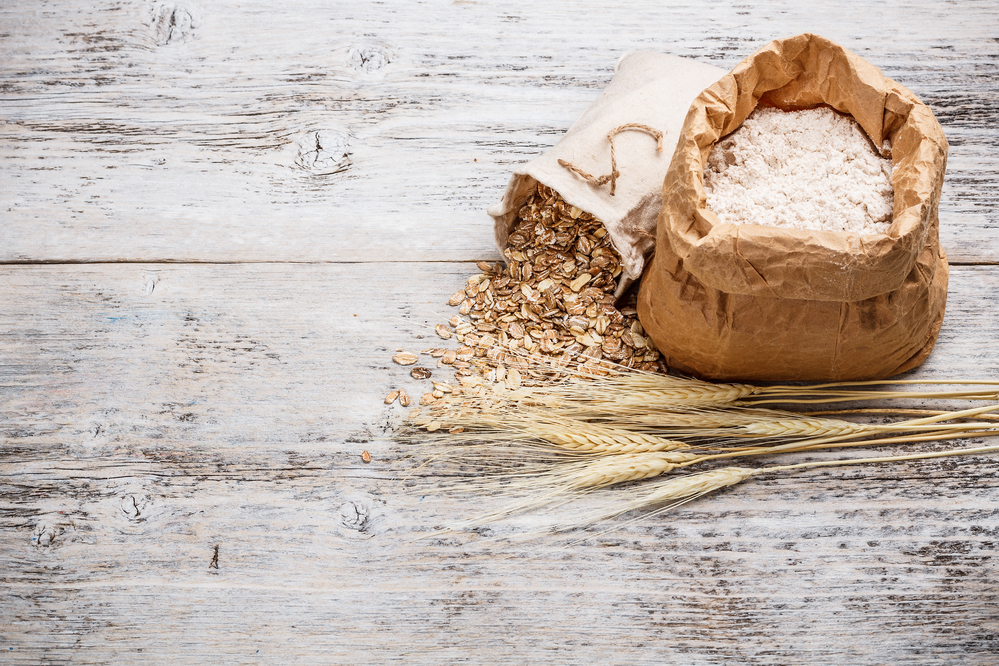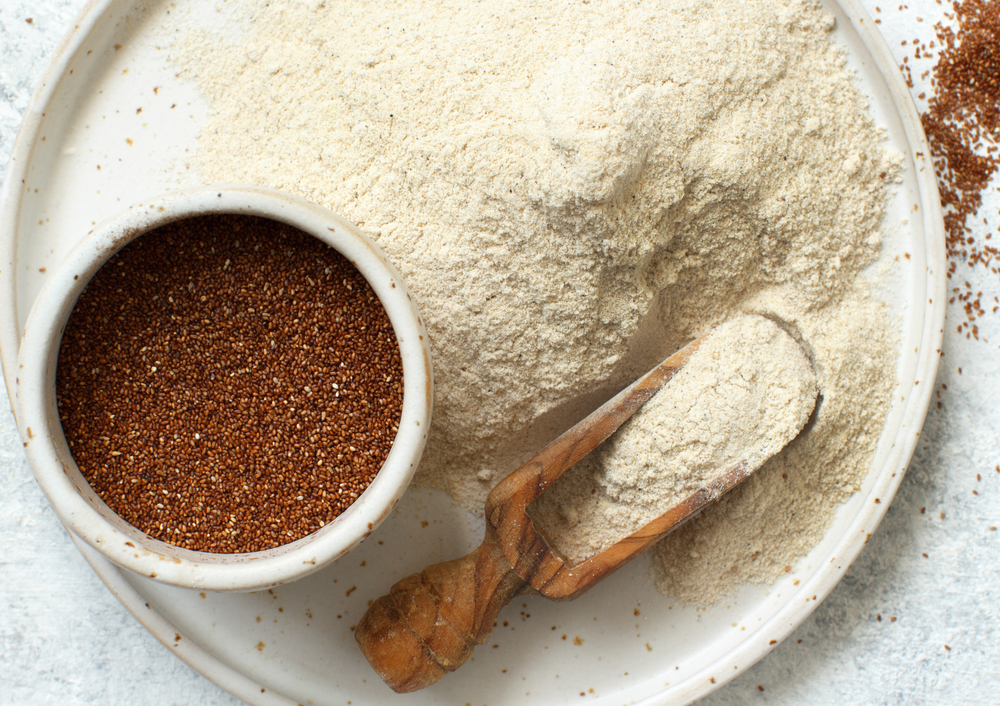Focaccia bread is a type of Italian bread that is popular for its unique texture and flavor. It is a flatbread that is made with high-gluten flour, olive oil, salt, and yeast.
Focaccia bread is known for its soft and chewy texture, and it is often topped with herbs, cheese, and other ingredients to enhance its flavor.
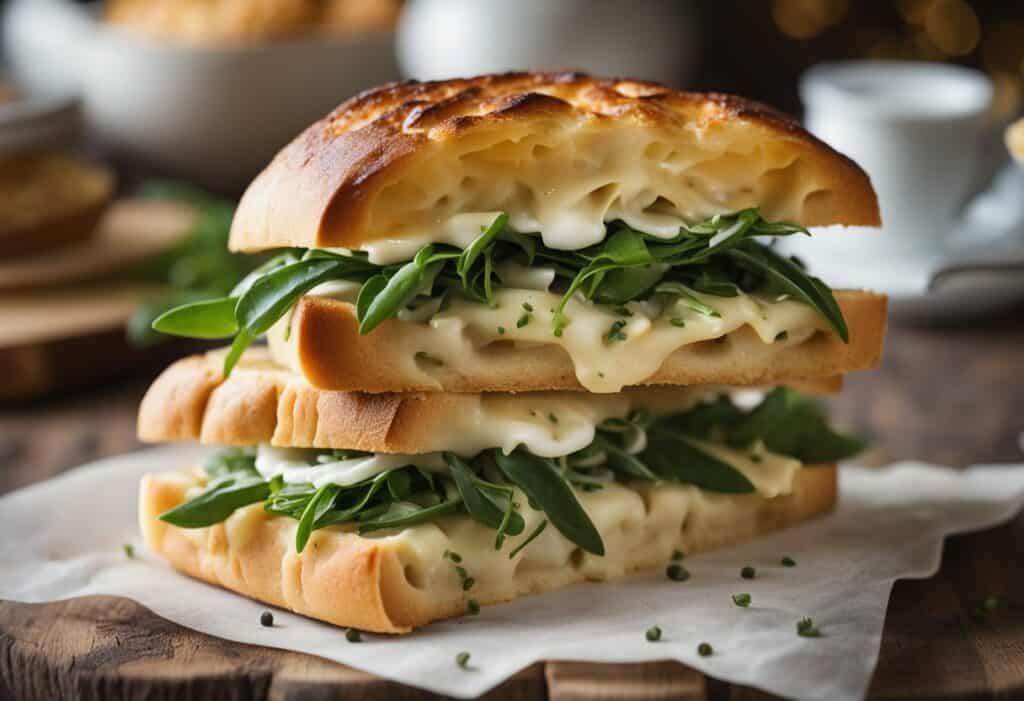
Focaccia bread is a versatile bread that can be used in a variety of ways. It can be served as a side dish, used as a base for pizza, or sandwiched with meats, cheeses, and vegetables to make a delicious sandwich.
It is also a great bread to use for dipping in sauces, such as marinara or hummus.
Key Takeaways
- Focaccia bread is a type of Italian bread that is known for its soft and chewy texture and unique flavor.
- Focaccia bread is a versatile bread that can be used in a variety of ways, such as a side dish, a base for pizza, or as a sandwich bread.
- Focaccia bread is also a great bread for dipping in sauces, such as marinara or hummus.
The Basics of Focaccia Bread
Focaccia bread is a type of Italian flatbread that is made with flour, yeast, water, salt, and olive oil. It has a chewy texture and is often topped with herbs and other ingredients to add flavor.
Focaccia bread is a versatile bread that can be used in many different ways, including as a base for pizza, as a sandwich bread, or as a side dish.
To make focaccia bread, you will need to start by mixing together flour, yeast, water, and salt. You will then need to knead the dough until it is smooth and elastic.
Once the dough has been kneaded, it will need to rise for about an hour before being kneaded again and allowed to rise for another 30 minutes.
After the second rise, the dough is ready to be shaped and baked. Focaccia bread is typically baked in the oven at a high temperature for about 20-25 minutes.
It is important to brush the bread with olive oil before baking to give it a crispy crust.
One of the key ingredients in focaccia bread is yeast. Yeast is a type of fungus that is used to leaven bread. It works by converting the sugars in the dough into carbon dioxide gas, which causes the dough to rise.
There are many different types of yeast that can be used in bread baking, including active dry yeast, instant yeast, and fresh yeast.
Another important ingredient in focaccia bread is flour. Bread flour is typically used to make focaccia bread because it has a higher protein content than all-purpose flour.
This protein helps to give the bread its chewy texture.
In addition to flour and yeast, water and salt are also important ingredients in focaccia bread. Water is needed to hydrate the dough and activate the yeast, while salt is used to add flavor and help regulate the fermentation process.
Overall, focaccia bread is a delicious and versatile bread that can be used in many different ways. Whether you are making it as a base for pizza or using it as a side dish, it is sure to be a hit with your family and friends.
Focaccia Bread Ingredients

Focaccia bread is a delicious Italian flatbread that is perfect for sandwiches, dipping in olive oil, or even enjoying on its own.
The bread is made using a few essential ingredients, as well as some additional ingredients that can add flavor and texture to the final product.
Essential Ingredients
The essential ingredients for making focaccia bread include bread flour, yeast, water, salt, and extra virgin olive oil.
Bread flour is a high-gluten flour that gives the bread its chewy texture. Yeast is used to help the bread rise, while water and salt are used for flavor and texture.
Extra virgin olive oil is used both in the dough and on top of the bread to add flavor and moisture.
Additional Ingredients
There are many additional ingredients that can be added to focaccia bread to give it extra flavor and texture. Some popular options include:
- Olives: Black or green olives can be added to the dough or placed on top of the bread for a salty, savory flavor.
- Tomatoes: Sliced or diced tomatoes can be added to the top of the bread for a burst of sweetness and acidity.
- Garlic: Roasted garlic or minced garlic can be added to the dough for a pungent, savory flavor.
- Cheese: Parmesan, mozzarella, or other types of cheese can be grated on top of the bread for added richness and flavor.
- Rosemary: Fresh or dried rosemary can be added to the dough or sprinkled on top of the bread for a fragrant, earthy flavor.
- Herbs: Other herbs, such as sage or basil, can also be added to the dough or sprinkled on top of the bread for added flavor.
- Potatoes: Thinly sliced potatoes can be added to the top of the bread for a crispy, savory topping.
- Balsamic vinegar: A drizzle of balsamic vinegar on top of the bread can add a sweet, tangy flavor.
- Red pepper: Crushed red pepper flakes can be added to the dough or sprinkled on top of the bread for a spicy kick.
- Breadcrumbs: A sprinkle of breadcrumbs on top of the bread can add a crispy texture.
- Bacon: Crumbled bacon can be added to the dough or placed on top of the bread for a smoky, salty flavor.
- Honey: A drizzle of honey on top of the bread can add a sweet, floral flavor.
- Fruits: Sliced strawberries, figs, pears, or other fruits can be added to the top of the bread for a sweet, juicy flavor.
- Hummus: Hummus can be spread on top of the bread for added flavor and texture.
- Kalamata olives: Kalamata olives can be added to the dough or placed on top of the bread for a salty, tangy flavor.
- Cherry tomatoes: Cherry tomatoes can be added to the top of the bread for a burst of sweetness and acidity.
- Spinach: Fresh spinach can be added to the top of the bread for added nutrition and flavor.
- Mushrooms: Sliced mushrooms can be added to the top of the bread for a savory, earthy flavor.
- Raisins: Raisins can be added to the dough for a sweet, chewy texture.
- Anchovies: Chopped anchovies can be added to the dough or placed on top of the bread for a salty, savory flavor.
- Roasted red peppers: Roasted red peppers can be added to the top of the bread for a sweet, smoky flavor.
By experimenting with different ingredients, you can create a unique and delicious focaccia bread that is perfect for any occasion.
The Process of Making Focaccia Bread
Focaccia bread is a delicious and versatile Italian bread that can be enjoyed as a snack, appetizer, or even as a main course.
Making focaccia bread is a simple process that requires only a few ingredients and some basic kitchen tools.
Preparing the Dough
To make focaccia bread, you will need bread flour, warm water, yeast, salt, and extra virgin olive oil. In a large mixing bowl, combine the flour, yeast, salt, and sugar.
Slowly add the warm water and olive oil, and mix until a smooth dough forms. Knead the dough for 10-15 minutes until it becomes elastic and smooth.
Once the dough is ready, place it in a greased bowl and cover it with a damp cloth. Let it rise in a warm, draft-free place for 1-2 hours, or until it has doubled in size.
Adding Toppings
After the dough has risen, punch it down and transfer it to a sheet pan lined with foil. Use your fingers to press the dough out to the edges of the pan, making sure it is evenly distributed.
Brush the top of the dough with olive oil and sprinkle with coarse sea salt and fresh rosemary.
You can also add other toppings to your focaccia bread, such as pesto, parmesan cheese, or sliced tomatoes. Use a spatula to gently press the toppings into the dough.
Baking the Bread
Preheat your oven to 425°F (218°C). Bake the focaccia bread for 20-25 minutes, or until it is golden brown and crispy on the outside. Remove from the oven and let it cool for a few minutes before slicing and serving.
Focaccia bread can be stored in a bread bag for up to 3 days, or frozen for up to 3 months. It is a versatile bread that can be enjoyed on its own or used as a base for sandwiches and other dishes.
Try experimenting with different toppings and flavors to create your own unique variations of this classic Italian bread.
Serving Suggestions for Focaccia Bread

Focaccia bread is a versatile and delicious Italian bread that can be enjoyed in many ways. Here are some serving suggestions for focaccia bread that you can try at home.
As a Standalone Dish
Focaccia bread is delicious on its own and can be enjoyed as a standalone dish. Simply slice the bread and serve it with some olive oil and balsamic vinegar for dipping.
You can also sprinkle some sea salt and herbs on top of the bread for added flavor.
As a Side Dish
Focaccia bread is a great side dish that can be served with a variety of meals. It pairs well with salads, soups, and pasta dishes.
You can also serve it alongside roasted vegetables or grilled meats for a hearty and satisfying meal.
In Sandwiches
Focaccia bread makes a great sandwich bread. You can use it to make a variety of sandwiches, from classic deli sandwiches to gourmet creations.
Try topping your sandwich with fresh vegetables, meats, and cheeses for a delicious and satisfying meal.
Here are some additional serving suggestions for focaccia bread:
- Toast it and serve it with eggs for breakfast
- Cut it into small pieces and serve it as an appetizer
- Use it as a base for pizza crust
- Pack it in a zip-top bag for a snack on the go
- Serve it in a bread basket at dinner parties
Overall, focaccia bread is a versatile and delicious bread that can be enjoyed in many ways. Try out some of these serving suggestions to discover your favorite way to enjoy this Italian classic.
Storing and Reusing Focaccia Bread
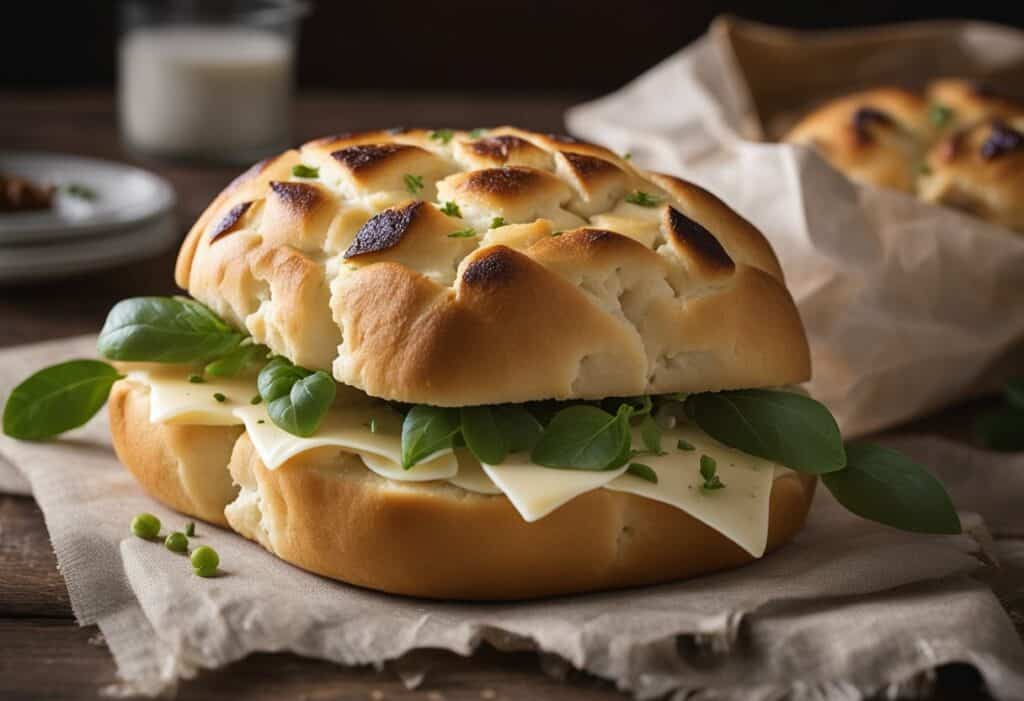
As with any bread, storing and reusing focaccia bread properly is key to keeping it fresh and delicious. Here are some tips on how to store and reuse your focaccia bread.
Storing Freshly Baked Focaccia
If you have just baked focaccia bread and want to store it for later use, the first step is to let it cool completely.
Once it has cooled, wrap it in foil or place it in a bread bag to prevent it from drying out.
You can also store it in a zip-top bag with a paper towel to absorb any excess moisture. Store it at room temperature for up to 2 days.
If you want to store it for a longer period, you can freeze it for up to 3 months. To freeze focaccia bread, wrap it tightly in foil or plastic wrap and place it in a freezer-safe zip-top bag.
When you’re ready to use it, let it thaw at room temperature for a few hours before reheating it.
Using Leftover Focaccia
If you have leftover focaccia bread, don’t let it go to waste! There are many ways to use it up, such as making bread pudding or using it as a base for a sandwich.
To make bread pudding, tear the leftover focaccia into small pieces and place them in a baking dish. In a separate bowl, whisk together eggs, milk, sugar, and any other desired ingredients, such as cinnamon or vanilla extract.
Pour the mixture over the bread and let it sit for a few minutes to soak in. Bake in a preheated oven at 350°F for 30-35 minutes, or until the top is golden brown and the bread pudding is set.
If you want to use leftover focaccia as a sandwich base, simply slice it in half and fill it with your favorite sandwich ingredients.
You can also toast it in the oven or a toaster for added crispiness.
Remember to store any leftover focaccia properly to ensure that it stays fresh and delicious.
Use foil, a bread bag, or a zip-top bag with a paper towel to keep it from drying out, and store it at room temperature for up to 2 days.
Alternatively, freeze it for up to 3 months and thaw before reheating.
The History and Origin of Focaccia Bread
Focaccia bread is a type of Italian yeast bread that is often baked with olive oil and various toppings. It is a flatbread that is popular in the Liguria region of Italy, particularly in the city of Genoa.
The origins of focaccia bread are not entirely clear, but it is believed to have been around since ancient times.
Some historians believe that focaccia bread originated with the Etruscans, who lived in North Central Italy before the formation of the Roman Empire.
Others believe that it was first made in Ancient Greece in the first millennium BC. It is worth noting that unleavened flatbread was already popular in the Middle East during this time.
The word “focaccia” is thought to come from the Latin word “focus,” which means “hearth” or “fireplace.”
This is because focaccia bread was traditionally baked in a hearth or on a hot stone. The first attestation of the word “focaccia” dates back to the 14th century.
Focaccia bread is similar to pizza dough in that it is made with flour, water, yeast, and salt. However, it is typically thicker and softer than pizza dough.
Focaccia bread can be topped with a variety of ingredients, such as olives, tomatoes, onions, and herbs.
Today, focaccia bread is a popular type of Italian flatbread that is enjoyed all over the world. It is often served as an appetizer or as a side dish to a main course. It can also be used as a base for sandwiches or as a pizza crust.
Variations of Focaccia Bread
Focaccia bread is a versatile Italian flatbread that can be enjoyed in many different ways. Here are some variations of focaccia bread that you can try:
Regional Variations
Focaccia Barese
Focaccia Barese is a regional variation of focaccia bread that comes from the southern Italian region of Puglia. It is made with potatoes, cherry tomatoes, and olives.
The dough is soft and chewy, and the toppings are savory and flavorful. Focaccia Barese is perfect for a casual lunch or as part of a charcuterie board.
Rosemary Focaccia
Rosemary focaccia is a classic variation of focaccia bread that is popular all over Italy. It is made with a simple dough that is flavored with olive oil and fresh rosemary.
The bread is soft and chewy, with a crispy crust. Rosemary focaccia is perfect for serving with soups and stews, or for making croutons for salads.
Modern Twists
Pizza Focaccia
Pizza focaccia is a modern twist on traditional focaccia bread. It is made with pizza dough and topped with tomato sauce, cheese, and your favorite pizza toppings.
The bread is soft and chewy, with a crispy crust. Pizza focaccia is perfect for a quick and easy dinner or for serving at a party.
Focaccia Toppings
Focaccia toppings are a fun and creative way to customize your focaccia bread. Some popular toppings include cherry tomatoes, green olives, and dried herbs.
You can also try adding sliced potatoes, caramelized onions, or roasted garlic. The possibilities are endless!
In conclusion, focaccia bread is a delicious and versatile Italian flatbread that can be enjoyed in many different ways.
Whether you prefer traditional rosemary focaccia or modern pizza focaccia, there is a variation of focaccia bread that is perfect for you.
Focaccia Bread in Meals
Focaccia bread is a versatile bread that can be used in various meals throughout the day. Here are some ways to incorporate focaccia bread into your meals:
Breakfast
Focaccia bread can be used as a base for breakfast sandwiches. Toasted focaccia bread can be topped with eggs, bacon, sausage, or deli meats for a hearty breakfast.
Focaccia bread can also be used for French toast, providing a unique twist to a classic breakfast dish.
Lunch
Focaccia bread can be used to make delicious sandwiches. The bread’s soft texture and flavorful taste make it a perfect choice for sandwiches.
It can be used as a base for grilled cheese sandwiches, paninis, or any other sandwich you can think of.
Dinner
Focaccia bread can be used as a side dish for dinner. It can be served with soup, salad, or pasta. Focaccia bread can also be used as a pizza crust, providing a unique twist on a classic dish.
It can be topped with tomato sauce, cheese, and any other toppings you desire.
In conclusion, focaccia bread is a versatile bread that can be used in various meals throughout the day. Its soft texture and flavorful taste make it a perfect choice for sandwiches, toast, and even dessert.
Incorporate focaccia bread into your meals for a unique twist on classic dishes.
Nutritional Value of Focaccia Bread
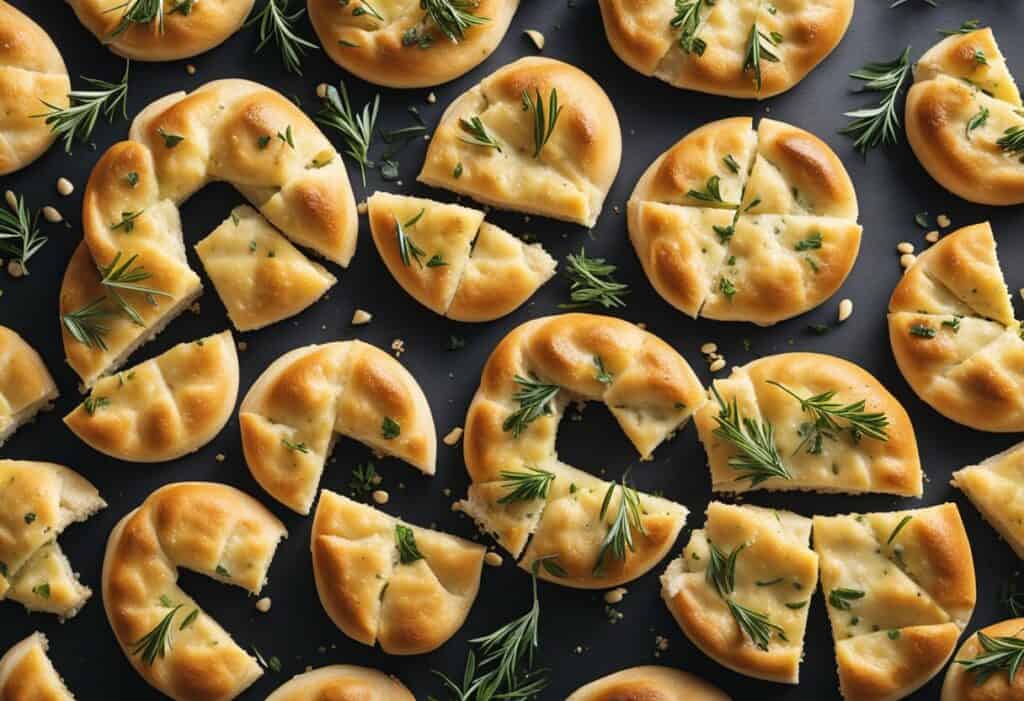
As an Italian flatbread, Focaccia bread is a delicious and popular choice for many people. It is a versatile bread that can be enjoyed on its own or as a side dish.
Focaccia bread is also known for its nutritional value. Here are some of the nutrients found in this bread:
- Carbohydrates: Focaccia bread contains 20.4 grams of carbohydrates per slice, 1 gram of fiber, and 1 gram of sugar and is considered a refined carbohydrate.
- Fats: Focaccia bread is high in monounsaturated fatty acids, which are healthy fats that can help reduce the risk of heart disease.
- Protein: Focaccia bread contains about 5 grams of protein per slice.
- Calcium: Focaccia bread contains 20mg of calcium per slice, which is important for healthy bones and teeth.
- Phosphorus: Focaccia bread contains 73mg of phosphorus per slice, which is important for healthy bones and teeth.
- Potassium: Focaccia bread contains 65mg of potassium per slice, which can help regulate blood pressure and prevent stroke.
Focaccia bread is also often flavored with olive oil, cheese, and various herbs and vegetables, which can add to its nutritional value.
Olive oil is a healthy fat that can help reduce the risk of heart disease, while cheese can provide calcium and protein.
However, it is important to keep in mind that these additions can also add calories and sodium to the bread.
When it comes to gluten, Focaccia bread is typically made with wheat flour, which contains gluten. This means that it is not a suitable option for individuals with celiac disease or gluten intolerance.
However, there are gluten-free versions of Focaccia bread available that are made with alternative flours.
In terms of sugar and salt, Focaccia bread typically contains a small amount of sugar and is often seasoned with sea salt.
Some recipes may also include honey or parmesan cheese for added flavor. Spinach and basil are also common toppings that can add to the nutritional value of the bread.
Overall, Focaccia bread can be a healthy and delicious addition to your diet, as long as it is consumed in moderation and as part of a balanced diet.
Frequently Asked Questions
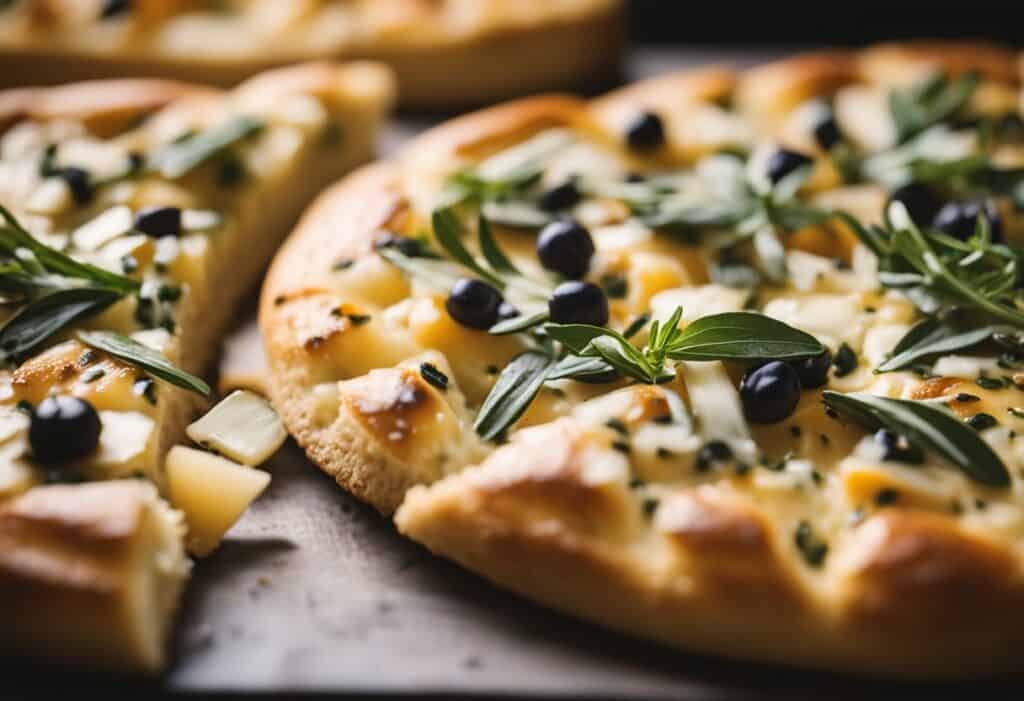
What are some dinner recipes that incorporate focaccia bread?
Focaccia bread can be used as a base for many delicious dinner recipes. One popular option is to top it with tomato sauce, cheese, and your favorite toppings to make a focaccia pizza.
Another option is to use it as a bread base for a sandwich or panini. You can also use focaccia bread as a side dish to accompany soups, stews, or salads.
What are some ways to serve focaccia bread as an appetizer?
Focaccia bread can be served as an appetizer in many ways. One option is to cut it into small pieces and serve it with a dipping sauce such as hummus or balsamic vinegar and olive oil.
Another option is to top it with sliced tomatoes, mozzarella cheese, and fresh basil to make a caprese-style appetizer.
You can also use focaccia bread as a base for bruschetta or crostini.
What are the texture characteristics of focaccia bread?
Focaccia bread is known for its unique texture. It is slightly chewy with a moist and tender crumb. The crust is crispy and slightly crunchy.
Focaccia bread is often topped with olive oil, which adds a rich and fragrant flavor to the bread.
What is the origin of focaccia bread?
Focaccia bread originated in Italy, specifically in the Liguria region. It has been around for centuries and was originally made by bakers who used leftover dough to create a flatbread that could be used as a snack or meal.
Over time, the recipe for focaccia bread evolved and became a staple in Italian cuisine.
What distinguishes focaccia dough from regular bread dough?
Focaccia dough is made using a higher ratio of water to flour than regular bread dough. This results in a wetter, stickier dough that is easier to spread out into a flat shape.
Focaccia dough is also typically flavored with olive oil and herbs, which gives it a distinct flavor profile.
Do you typically serve focaccia bread hot or cold?
Focaccia bread can be served either hot or cold, depending on the recipe and personal preference. When served hot, it is often crispy on the outside and soft on the inside.
When served cold, it can be used as a base for sandwiches or served as a side dish with a salad or soup.




